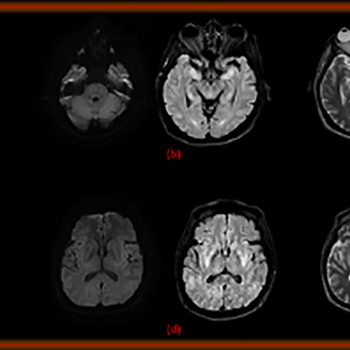Keywords
COVID-19, coronavirus, SARS-CoV-2, hyponatremia, SIADH, urine retention
Abstract
Coronavirus disease 2019 (COVID-19) was first reported in Wuhan, China, in December 2019. The disease is caused by severe acute respiratory syndrome virus coronavirus 2 (SARS-CoV-2). A few published cases have linked COVID-19 and hyponatremia. The mechanism of hyponatremia in these cases is related to the syndrome of inappropriate antidiuretic hormone secretion (SIADH). Here we present a unique case of urinary retention and SIADH as unusual presenting features of SARS-CoV-2 infection.
References

Views: 1480
HTML downloads: 957
PDF downloads: 703
Published:
2020-09-11
Issue:
2020: Vol 7 No 10
(view)










